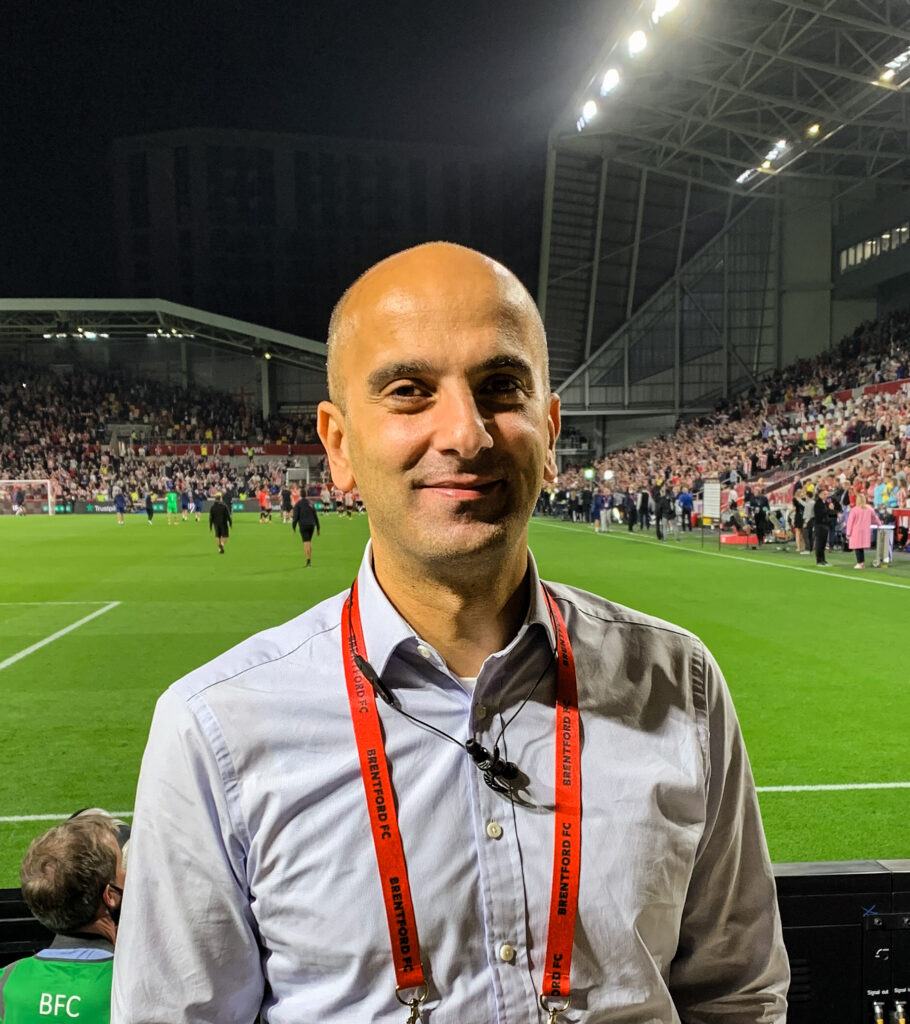With the sad news of Rico’s injury being announced recently, rather than leave it to Dr Google or your local pub doctor usually of course in close conversation with the local pub lawyer, we thought we’d talk to the best!
Who better than Mr Hani Abdul-Jabar a BFC season ticket holder and our stadium doctor on match days. He is the very best person to help us understand what exactly is an injury to the Anterior Cruciate Ligament.
BU: “We have heard that Rico has an ACL injury. And we hear about lots of these injuries in sport – so what is an ACL?”
Hani: The Anterior Cruciate Ligament (ACL) is one of the key ligaments that help stabilise the knee joint. The ACL connects the thighbone (femur) to the shinbone (tibia). It controls both translational (backwards and forwards) and rotational (pivot) movements at the knee joint.
BU: For fans watching the Newcastle game at the weekend, it wasn’t obvious that there was anything seriously wrong with Rico initially, and looked like a normal clash we see in games all the time – can you give us an idea of how an ACL injury happens generally?
Hani: The classic and most common mechanism of ACL injuries is termed a “pivot shift injury”, where the foot is planted stationary on the pitch and a side force is applied to the knee (valgus force), through a either a challenge/tackle from the opponent or even the players own body momentum. All the above usually happens in less than 2 seconds.
BU: as a specialist knee surgeon, is it possible that you might have been watching, seen the incident and just from the TV pictures thought that Rico has suffered that sort of injury? Do you have a sense of how this injury happened based on the pictures on TV?
Hani: Certain ACL ruptures are so obvious especially when replayed in slow-motion. Rico’s was not as typical but if you analyse the challenge using 360 technology, you may be able to reproduce the forces through Rico’s knee which led to his ACL rupture.
BU: We see this sort of injury happen to a lot of footballers – is this sort of injury a usually a team sport/contact sport injury or does it happen to all types of athletes?
Hani: The majority of ACL ruptures are sustained during contact sports such as football and rugby, but any “pivot shift mechanism” can lead to ACL rupture, seen commonly in other sports too such as skiing, netball and racket sports.
BU: and why is this important to any one and particularly an athlete?
Hani: Without an ACL, the knee can become grossly unstable during contact sports, leading to a potential damage to other essential knee structures.
BU: so what happens when an injury like this occurs?
Hani: Full ACL tears cannot be rectified without reconstructive surgery. A graft is harvested from either the Hamstrings muscle group (back of the thigh) or the Patella tendon (knee cap), and tunnelled through both thigh and shin bones, to act as the new ACL.
BU: and what sort of time scale do these sort injuries entail in terms of recovery time?
Hani: It takes up to 9 months for the graft to incorporate, during which a player would engage in a graded physiotherapy rehabilitation programme. Return to sports prematurely risks graft failure and the need for repeat (more complex) reconstructive surgery.
BU: We hear a lot about ACL injuries is this considered to be the most serious injury that a footballer might get in terms of time out of the game?
Hani: ACL full rupture is a devastating injury; historically (up to 35 years ago) it was a career ending injury. Reconstructive surgical techniques have evolved significanty (from open surgery to keyhole), and we are now able to restore the normal biomechanics of the knee with ACL reconstruction, enabling players to resume their career. There are however rare injuries where other knee stabilisers are ruptured too (multi-ligament); these are by far more challenging (to player and surgeon) and serious than an isolated ACL injury.
BU: Obviously without knowing the exact detail of what Rico is doing – what would you expect that a player with an injury like this has been doing or has had to do since the injury? Presumably a lot of rest – but does rehab start straight away?
Hani: Clinical examination by a knee specialist followed by diagnostic imaging (MRI scan) and a discussion on reconstructive options (graft choice). Ice application with rest and elevation is mandatory in the 1st 7-10 days to lessen the knee swelling along with gentle non-resistive exercises programme to keep the muscles active. The real rehabilitation programe or “the hard work” starts immediately after surgery with set targets to achieve at each time interval.
MBBS BSc (Hons) MRCS (Eng) FRCS (Tr&Orth) Dip (FIFA)
Consultant Trauma & Orthopaedic Surgeon
Clinical Trauma Lead (LNWH)
Senior Clinical Lecturer (Imperial College)

